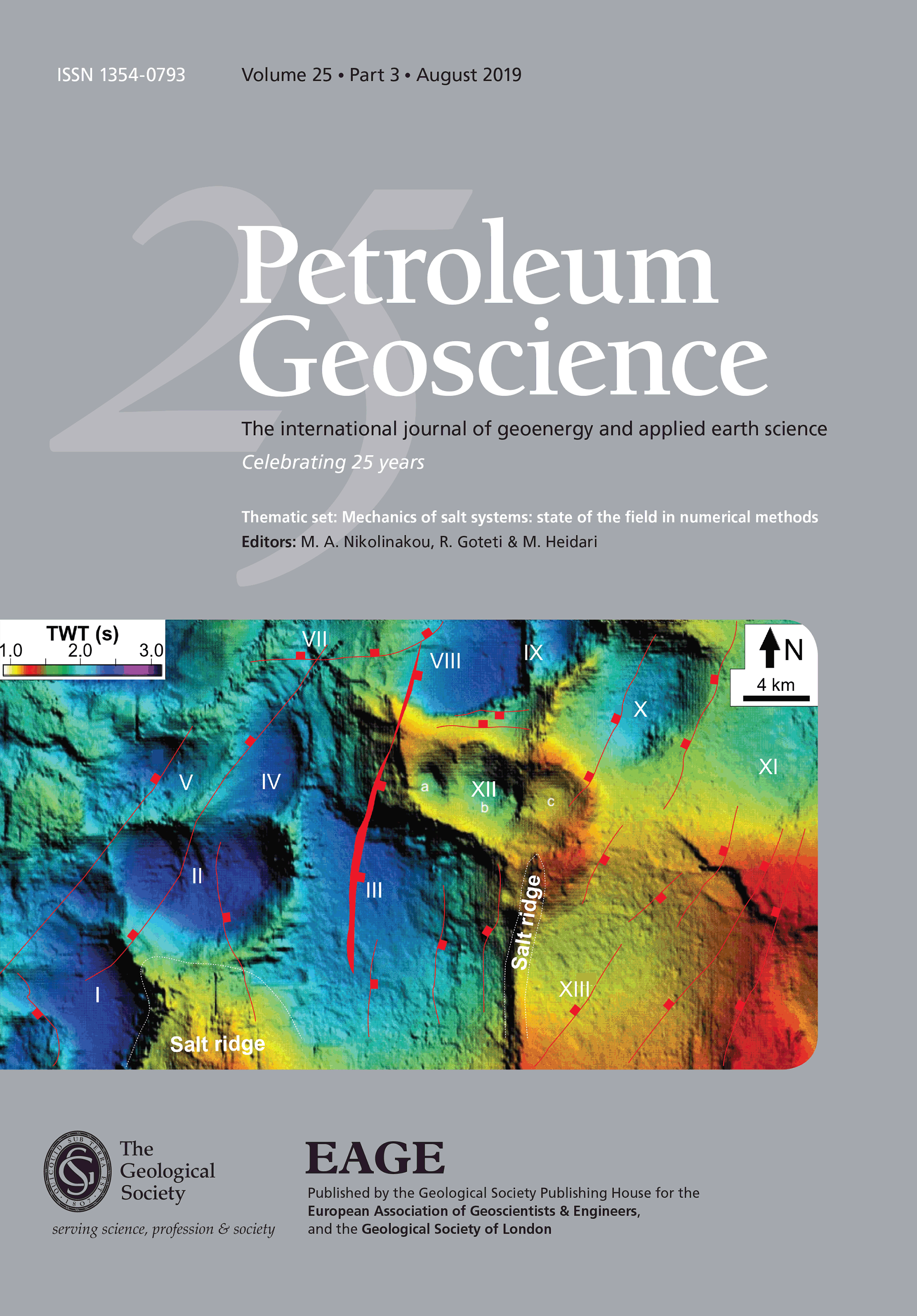
Full text loading...
Salt structures present numerous challenges for targeting reservoirs. Salt movement within the subsurface can follow complex pathways, producing deformation patterns in surrounding strata which are often difficult to decipher. Consequently, the relative role of key salt-flow drivers and geological sensitivities on salt-structure evolution are often poorly understood. To address this, we have developed 2D geomechanical models using the finite-element method to simulate salt diapir and pillow development in two extensional tectonic settings. We conducted model sensitivity analyses to examine the influence of geological parameters on field-scale salt structures and their corresponding deformation pattern. Modelled diapirs developing in thin-skinned extensional settings closely resemble published analogue experiments; however, active and passive stages of diapir growth are seldom or never reached, respectively, thus challenging existing ideas that diapir evolution is dominated by passive growth. In all modelled cases, highly strained domains bound the diapir flanks where extensive small-scale faulting and fracturing can be expected. Asymmetrical diapirs are prone to flank collapse and are observed in models with fast extension or sedimentation rates, thin roof sections or salt layers, or initially short or triangular-shaped diapirs. In modelled thick-skinned extensional settings, salt pillows and suprasalt overburden faults can be laterally offset (decoupled) from a reactivating basement fault. This decoupling increases with increased salt-layer thickness, overburden thickness, sedimentation rate and fault angle, and decreased fault slip rates. Contrary to existing consensus, overburden grounding onto the basement fault scarp does not appear to halt development of salt structures above the footwall basement block.
Supplementary material: Animations for all model runs are available at https://doi.org/10.6084/m9.figshare.c.4446272

Article metrics loading...

Full text loading...
References


Data & Media loading...

